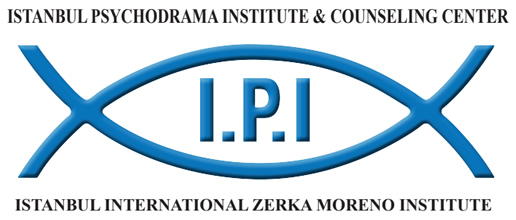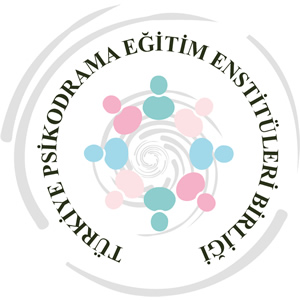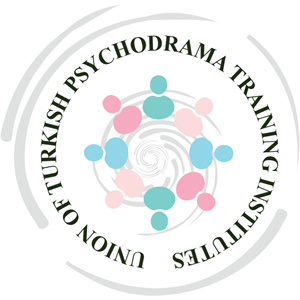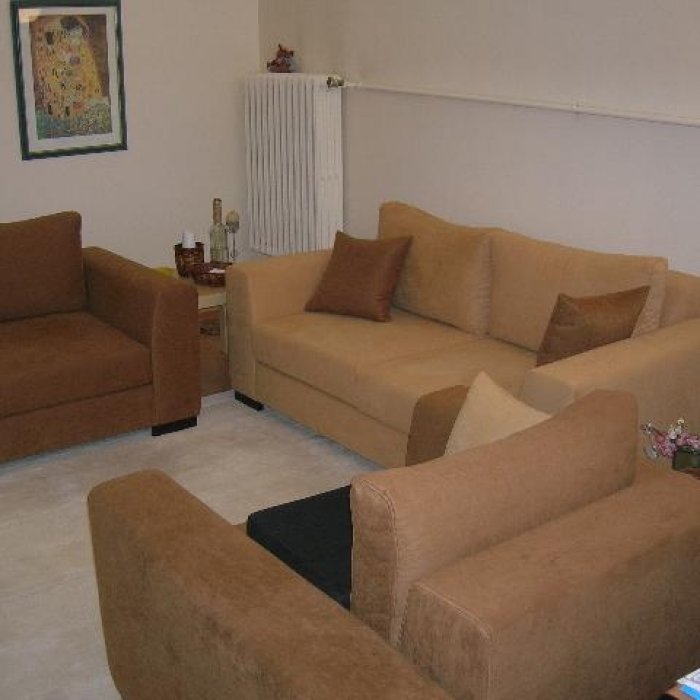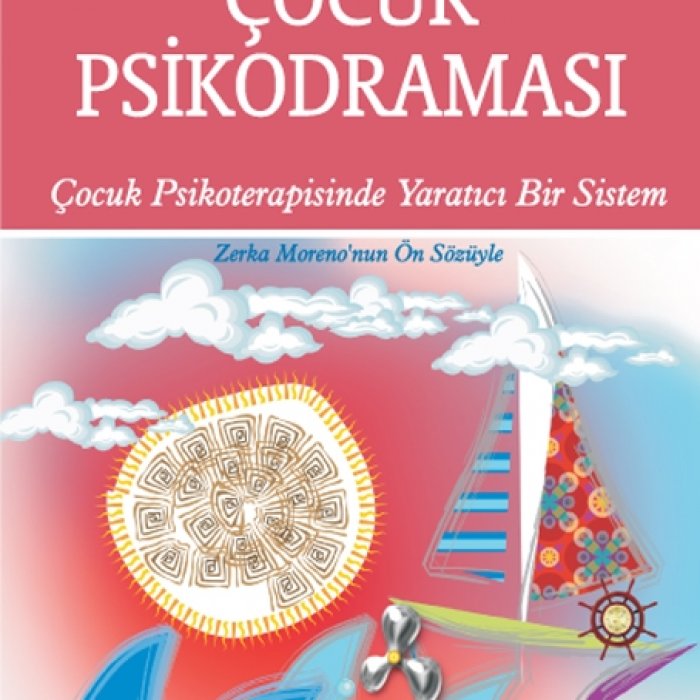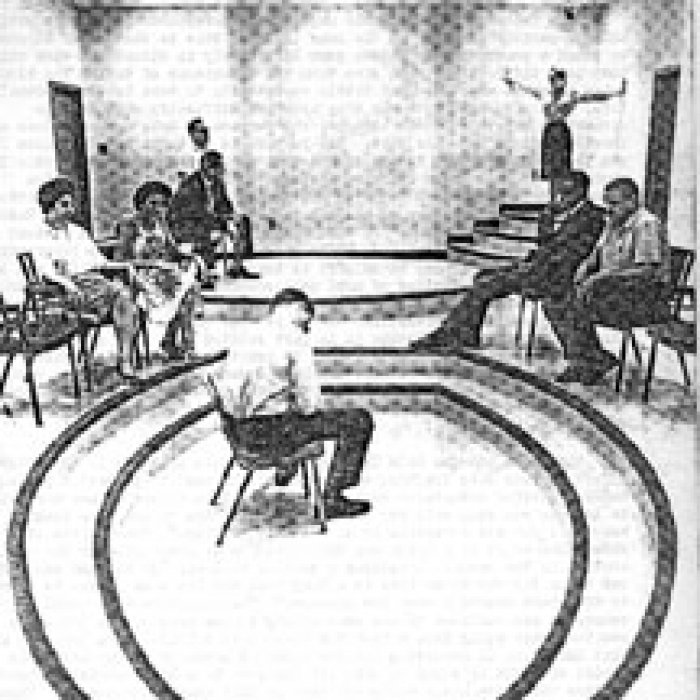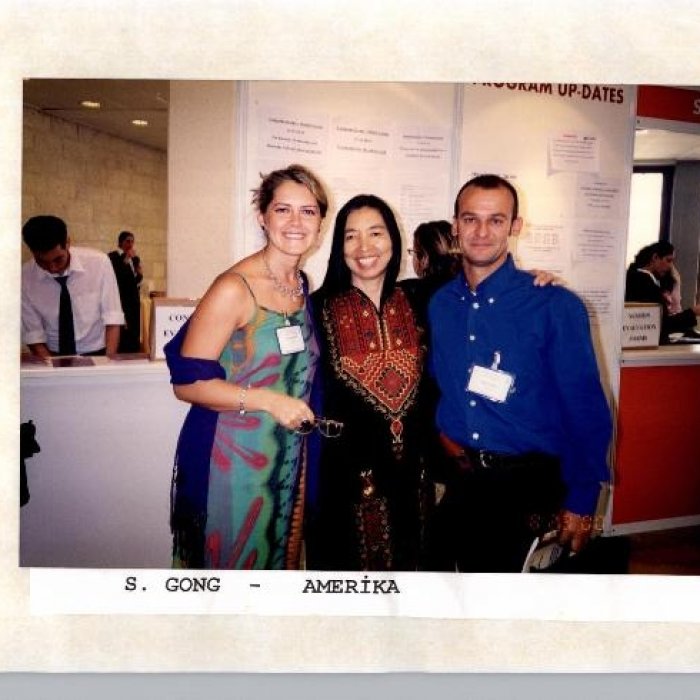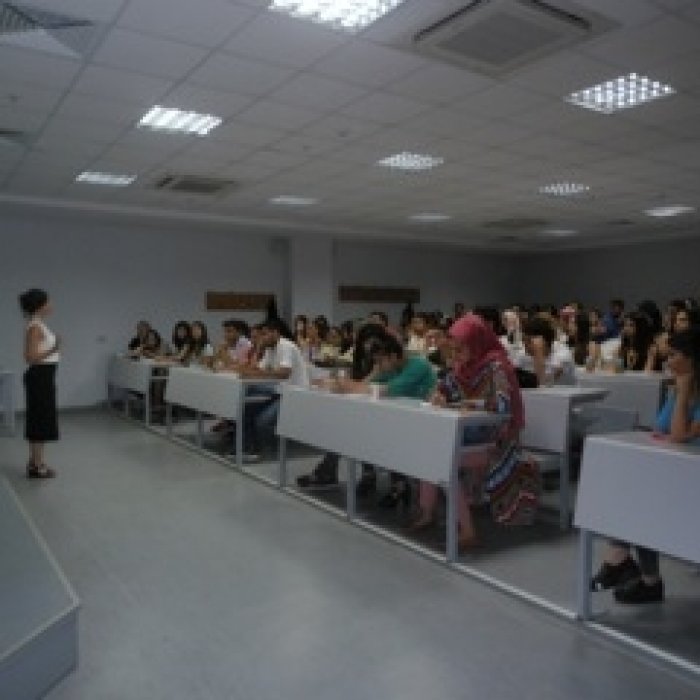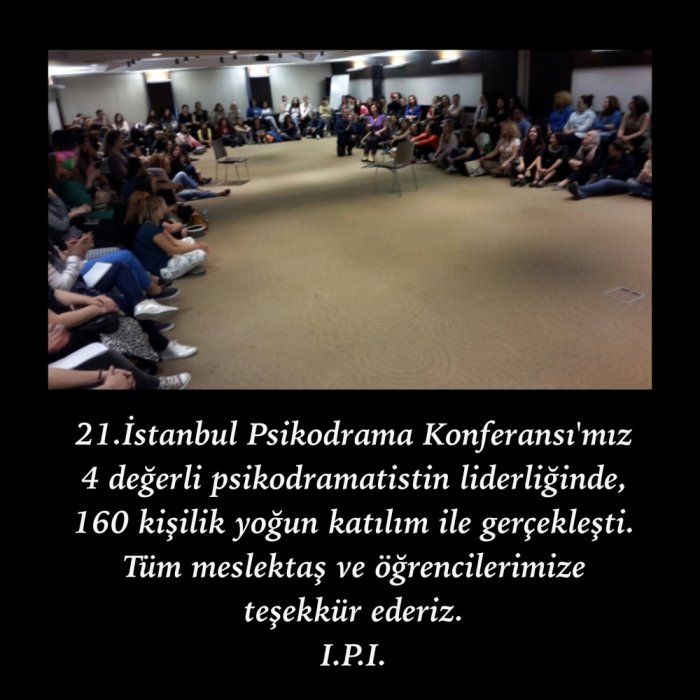Tangodrama - A New Action Method Model for Couples Therapy
TANGODRAMA
A new Action Method Model for Couples Therapy
Deniz Altınay- Psychodramatist
President of Institutr
Tangodrama is a form, combining dance and movement therapy with psychodrama in very particular conditions. In its own system, has a unique characteristic. The first thoughts of this system emerged in 2006. Then in 2008 in “International Family and Couples THerapy Conference” held in Boğaziçi University, I was able to present this system to scientific community’s appreciation through my “Tangodrama- A new approach in Couples Therapy” titled conference presentation. Psychodrama contains a structure which is very much open to all kinds of new models and systems. This structure is gets its source from creativity which is the foundation of Psychodrama. Tangodrama is a therapeutic method, inwhich very important elements of Argentian Tango regarding male-female relationships are assesed and recreated fort he couples on the Psychodrama stage.
Argentian Tango first started in the suburbs and brothels of Buenos Aires in the last century. Since then it has gone through structural and esthetical transformations;spreading through the world, starting from Paris to Europe. This transformation is relevant and parallel to the changes that take place in the individual' psychological transformation which reflects upon their relationships and is concurrent with the society's sociological transformation. In time, the new techniques and and concepts which became a part of this dance were able to exist in the relaitonship dynamics which cahen according to the transformation of female and male roles which exist in the structure of relationships. The sociological change in question is in other words the change in the family concept, which naturally has a base on the couple concept. This dance consists of an integrity of analogies and rules based on male-female roles and is born completely from life itself. The important elements of this dance evokes the existence of “tangodrama” and provides couples an important chance to learn, to investigate and a chance of therapy in this system. Tangodrama as a psychodramatic approach in couple therapies, takes its philosophical roots and principles from 1st psychic development phase. This early phase is substantial with and related to mother-infant relationship which determines our basic needs. In this pahse the mother and the infant go through their first experiences, and holds a prior impact on on future partner choices. If they undergo through this phase in a healthy way, the baby gets to experience and learn the states of “being together”, “doing together” and “feeling together”. When this process is experienced in a healthy way, it leads to choosing future partners whom we can live similar experiences. On the contrary, it is also the reason for choosing partners who will satisfy our unhealthy needs. These choices are determined also by the father who enters into baby’s life later on. The mother, being one of the important objects, is the most important person to effect our relationship manners with others. This early period experiences coincide with a time where there is no language and needs to be investigated with nonverbal methods. Tangodrama holds an ideal structure for this.
Psychodrama’s promt, effective and revolutionary aspect is “Action” and is an opening to subconscious in psychodrama. Subconscious is filled with both verbal and non-verbal materials. The body which remembers what the mind forgets, provides all the information we need. Tango is a sum-total /unity of actions revelaing everthing going through between a couple. In fact tango is the couples’ dance of subconscious in this context. In each action and counter-action, both subconsciouses are continuously in communication. The couples without noticing undergo its effect, and so the dance goes on. In “tangodrama” tango, as an action of couples, establishes the beginning of the investigation. Later on psychodrama gets involved, in the proceeding phases tango can be used again to test out new experiences. The dyadic/couple relationship depends on the fundamentals of harmony and togetherness based on this mother-baby relationship. Moreoever this dyadic/couple relationship emerges from being together, feeling together and doing together actions. This situation is also one of the definitions of health couple relationship. Independence and personal borders exist in the nature of relationship, and are effective in the relationship process. The importance of the dynamics of a relationship oversteps the main aim of this article. Our main aim is to introduce “tangodrama”. Moreno’ “marriage role prediction test” is the analysis of female and male roles in a relationship and aims to define and develop ideal role descriptions for each separate couple in marriages. These roles consist of various sub-categories of roles. The analysis and research of these roles play a crucial part to determinde the therapist’s approach in “tangodrama”.
Tango is a dance based on a “leading male” and a “follower woman”, is not based on memorised figures or choreography. Just like in real life, the fundamentals of tango are not based on memory, although in time male and female memorise each other’s dances. The dyadic relationship stands on this basis. The issues of leading, management of the relationship, the way couples lead eachother stand in the heart of this relationship. Originating from this aspect, the metaphor of leading which exists in tango, reveals all the behaviour patterns in the relationship. How does the male lead? How does the female respond? Who steals role? Who has difficulties in whichever roles? By using tangodrama in this context, all conflict are revealed rapidly. The couples lay out their subconscious contents and their realities, before they have time to hide themselves.
In tango, males and females present different manners. Among these manners, men who dance according to women, men who dance according to music, men and women who dance according to and for their surroundings, men who dance on their own selves as if they are alone, women who dance on their own as if they are alone, women who steal the role of the man, man who leave no space of freedom to women, women who enjoy being knocked around during the dance, women who fight with men, women who teach the men and so on can be listed. From these grounds, tangodrama, with reference to the fact that females and males show the same behaviour patterns in real life, provides an oppurtunity of awareness, followed by change and acceptance for the couples. This procedure will be better understood when the process of Tangordrama is studied. This aspect of tangodrama makes it an accurate method of diagnosis. In couples therapy, the real diagnosis is replaced by the problems defined by both of the couple, or separate problems of each couple. This process holds a very important place in the therapy. This accurate diagnosis process is shortened by the usage of tangodrama, without the need of interpretation. The psychodramatist makes the diagnosis by seeing the truth; and thus can head towards to the accurate treatment rapidly. The couples get a chance to observe other couples, and to exchange feedbacks on specific subjects.
Tangodrama is not a psychodrama group psychotherapy only for couples with problems to cure their problems. It is also a method to improve relationships through better recognition of eachother and developing their relationship dance. In this context, tangodrama is in accordance with psychodrama; it concerns not only pathological cases but also the healthy ones and the improvement of them.
How does the process of “tangodrama” work? The main structure of Pschodrama sessions is conserved in “tangodrama”. The phases of warm-up -- action -- sharing subsist as main phases. The warm up is carried out by tango and the metaphor of dance. Afterwards, according to the structure of warm up dance, either the action work continues with the whole group’s participation or the session ends with the sharing of this work. Another possility is when a more warmed up couple gets to be in the center of the group, and their relationship can be looked at with the help of rest of the members. This may appear as a protagonist work, but indeed should be named the pyschodrama of couple’s relationship. This way of psychodramatic work includes differences than a protagonist work.
The Process
A tangodama session, primarily starts with the introduction of the couples. After a small verbal beginning, introduction proceeds with the exercises of walking and pausing along with tango music. These exercises aim for the couples to get reacquainted. Moreover creates an oppurtunity for the couples to feel closeness for eachother which will enable them to work together. These actions or warm ups are various and beside the main point of this article. After these warm ups, the couples are asked separately to express their motivations for attending to
this group. The aim of this sharing is to set the essentials this group work is based on. The expression of these essentials, help the couples to interpretate the outcomes from the warmups.
During these exercises the conflicts and the problems of the couples are more accurately determined once again. Some of the couples get more warmed up than the others, and so reach the phase where they deepen the work. At this stage, one couple’s tangodrama process begins. At this point various techniques are used. Acutally this action is a work of conflict resolution and alteration of perception. For this reason the psychodramatist should be an expert on these subjects. The couples are now more able to determine their conflicts and problems more accurately. When the cohesion is insured, the couples start to do the exercises with other partners. This strategy should be used very attentively. Most of the time, when the psychodramatic work of a couple begins, ther members are asked to choose their own doubles. To better understand the problems, the psychodramatist should use the mirror technique. The couple choose their doubles. The doubles demonstrate their dance, in other words their relationship, to the couple. In tangodrama, speacialy trained auxilliary egos would be very useful. This way, mirror technique could be applied in a better way. When lacking the trained auxilliaries, other group members can take these roles. This situation has its own advantages; this way through the process of choices, couples which have similar problems may realize themselves. By the double choices of the couple in the middle, the reality presents itself that the doubles have similar issues. This way, the chosen couple get feedbacks and start to look at themselves.
When the problems are clear and the conflicts are accurately re-defined, couples can come to the stage as protagnists. The couple in the middle, understand clearly the problem of the relationship by the use of the tangodramatic techniques of the therapist. Thus they start to talk about how this problem has emerged in their real lives. This conversation takes the couple to a scene where the problem is seen clearly. In this scene a conflict reslution work is executed, followed by getting back to tango exercise to check if the resolution is settled in the dance or not. If the problem persists, they explore the resolution through the dance metaphor with the assitance of the therapist and they start to apply it. When this phase ends, sharing process follows. Other couples, auxilliary egos give their feedbacks. Feedbacks and sharing is applied according to the psychodrama group psychotherapy rules and thus the work is concluded.
The group members, in this context the couples, are not forced to work on a specific couple at all times. The group process may continue with warm-up dances which include tangodrama based themes. The awareness that evoked through such group work, helps the relationshipsi communication and sometimes personalities to develop, in addition to resolution of some of the problems. Just like it has been mentioned in the beginning of this article, this condition provides tangodrama to be applied to healthy couples as well as pathological relationships. Even if the couples do not present a problem, the warm-up dance may reveal hidden problems and provide insight related to the issues. Various techniques may be used in the course of this group work. “Walking Together” exercises comprise the majority of the dance warmups. Many different forms of walking exercises exist. “Dance with the Double” is the technique which provides the easiest way to get feedbacks and apart from warm-up process, may be used as an auxilliart technique during the couple-protagonist action. This way everyone gets a chance to dance with themselves. “The partner who makes mistakes” is a group dance game on its own, and may be used in the further stages of the group. One of the partners makes mistake deliberately, and thus this game focuses on resolutions, creativity and manners. “Dance without touching” is an effective warm-up dance exercise which aims to increase communication, and thus helps and teaches couples to improve feeling eachother. “How did the man lead” “how did the woman lead” are another examples of warm-up dance games which may be used separately or together. This basic dance exercise may be used in the every group work many times, to the whole group or to separate couples. “who is leading” is another essential dance exercise. The conflict of leading is an important section of relationship problems and is one of the main reasons of shaking up many of the relationships. All of these games may fill up one group session. They may also provide some of the couples to get warmed up so that they come into the middle to continue with a deeper action. Tangodrama is a newly denominated creation which is formed in the Psychodrama Group Psychotherapy system. After a long time studying of Tango and Psychodrama, it will take its place as a sub field within Psychotherapy with Couples. The forming of a group to work with this theme in Istanbul Psychodrama Institute is in proces.
